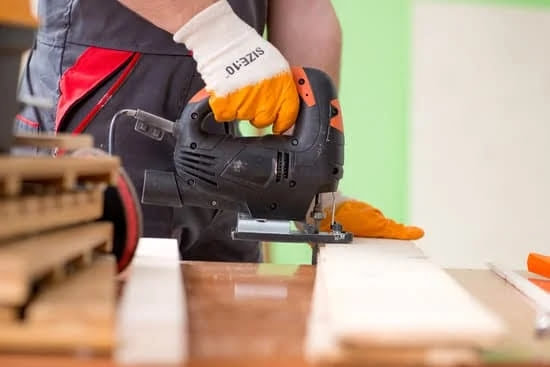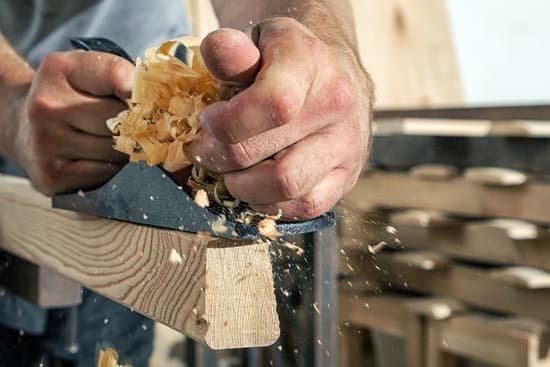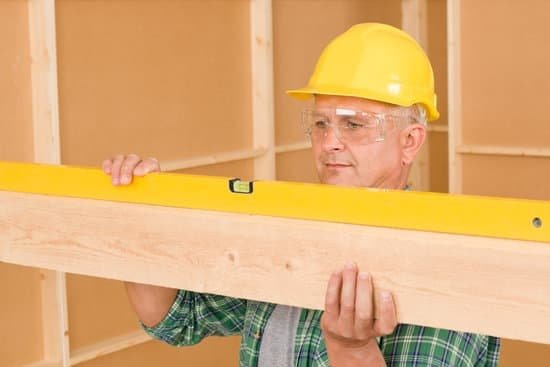Introduction
DIY woodworking projects provide an enjoyable and creative way to improve the look of your home. Popular projects like building furniture, creating storage solutions, and other decorative items are helping more people take a crafty approach to updating their homes. With a few tools and its simple techniques, you can make an array of styles from traditional to modern designs. Not only are these projects visually pleasing, but they also help increase the value of the home.
From the kitchen to the living room and even outdoors, DIY woodworking provides eye-catching accents for your home. You can create custom furniture such as shelves, tables and chairs that add style and functionality to any space. Storage solutions give you hidden yet easily accessible nooks or cubbies where various items can be tucked away neatly. And decorative pieces like small crafts bring personality and warmth into a home while showing off your own personal sense of style.
These easy-to-follow woodworking projects come with detailed instructions so even novice DIYers can tackle these tasks with ease. You’ll have plenty of resources available online that contains inspiring material with step-by-step tutorials or printed plans designed by experts in the field who provide tips on tools, materials and the details needed in each project so you don’t have any guesswork going into it! Many kits are now available to quickly complete larger projects without having to worry about finding all the materials yourself. From tool sheds to contemporary coffee tables, there is boundless potential when it comes to DIY home improvement using wooden crafts!
Types of DIY Woodworking Projects
1. Making Your Own Furniture – Building furniture from scratch allows you to use your own creative ideas and customize the piece to fit in an existing room or make a completely new one without having to buy ready-made items. Examples of DIY woodworking projects include building bookcases, cabinets, coffee tables, benches, desks and chairs.
2. Home Improvement Projects – Home improvement projects are a great way to make drastic changes in your home while also reinforcing existing structures or restoring older pieces which have suffered wear and tear over time. Examples of DIY woodworking projects include repairing doors and windows, building decks and fencing, replacing siding or trimming on houses, replacing worn flooring boards or making custom shelving units for the garage.
3. Personalization Projects – Personalization projects are great for anyone who wants to add their own touch to a room or simply add something creative that is unique and tailored just for them. Examples of DIY woodworking projects include making picture frames out of different shapes and sizes of woods, creating unique signs with meaningful quotes on them as well as designing keepsakes such as toy boxes, key chains and plaques from scratch using various types of woods like birch or pine.
Essential Tools
Essential tools for DIY woodworking projects vary depending on the particular project but can generally be broken down into three main categories: cutting, joining, and finishing tools. For cutting tools, a circular saw would be the most helpful. This type of saw is easy to use and able to make long straight cuts quickly. A jigsaw is an alternative option that provides more flexibility when it comes to curved or irregular-shaped cuts. Joining tools such as a biscuit joiner or a pocket hole jig allow you to link pieces with strong connections that won’t easily come apart and also provide an aesthetically pleasing look. Finishing tools typically include sanders, which are great for smoothing out surfaces before adding stain or paint and other types of finish, as well as drills and chisels which are necessary for carving out specific shapes or making holes.
When it comes to purchasing these tools the most important thing to consider is the quality of construction – more expensive models tend to have better materials and last longer than cheaper models. Additionally, reputable brands usually come with warranties under which you can replace parts if needed at no cost or get your money back in certain cases. Investing in good equipment means it will work properly when needed and save time instead of having to continuously fix low-quality tools that break often.
Step-by-Step Guide
One of the easiest DIY woodworking projects is making a garden planter box. It’s simple but using some basic tools and simple techniques, it can be quite rewarding in terms of the end product and being able to proudly say you made it yourself. Here are the different stages you need to follow when making your own garden planter box:
1. First, you need to get all the materials together such as good quality lumber, screws, drill bit, screwdriver, saw or other cutting tool, sandpaper and sealant (for protection from weather).
2. Start cutting your wood into the sizes of boxes required for your project – ensure accuracy for each corner to easily fit together later on.
3. Sand down each piece of wood so that it will fit nicely together without any excess gaps appearing once assembled.
4. Assemble each side and corner of the planter with your screws until you have a complete box shape with no loose pieces left off or sticking out anywhere.
5. To finish off now add the sealant of choice in order to make sure that it’ll last outside in all kinds of weather conditions on an outdoor surface such as grass or patio area etc.
6. And finally fill up with soil and/or plants/herbs – Enjoy!
Organizing Resources
1. YouTube Tutorials: There are countless DIY woodworking projects available on YouTube, from easy-to-follow step-by-step guides to more intricate and advanced tutorials. Search for videos that cover the project you’re interested in working on.
2. Blog Posts: Many websites and blogs specialize in DIY projects, offering helpful how-tos and tips for amateur woodworkers. Do a quick web search for any topic related to your project to find relevant blog posts with detailed directions and pictures of finished results, as well as recommendations for tools and materials.
3.Woodworking Magazines: Subscribing to magazines tailored specifically to woodworking enthusiasts is an excellent way to get up-to-date info on new products, gimmicks, tricks of the trade, and much more. Check out popular titles such as Fine Woodworking or Wood Craft Magazine in addition to local home improvement stores that might carry them specifically tailored towards DIYers like Maker Shop Coop publications
4. Free Online Publications: If you don’t have the funds to buy a magazine subscription there are still plenty of online DIY woodworking resources available free of charge! Popular woodworking blogs often provide inspiring ideas in their posts or through detailed instructions or tutorials on various topics such as How To Build A Table or Tips For Birdhouse Building Basics
5. Storefront Resources: Many big box stores and local home improvement retailers offer instructional pamphlets with ideas for projects varying from beginner levels all the way up to more advanced levels along with products needed for each particular project you’re working on at hand giving advice beyond what can be achieved with just online research or magazine reading alone – many strive hard to ensure that they are providing step by step instructions so even a novice handyman can easily walk away confident they have what they need in order put together something lasting as well as attractive all while making it seem reasonably simple .
Essential Safety Tips
Safety is an absolutely essential component to consider when undertaking DIY woodworking projects. It’s important for anyone about to undertake these types of projects to thoroughly detail the safety precautions that must be followed before, during, and after the project. Here are some general recommendations for precautionary steps and safety gear:
1. Wear necessary safety gear – It is highly recommended that you wear protective eye-wear, closed-toe footwear, and hearing protection while executing DIY woodworking projects. Moreover, you should make sure that long hair is tied back and any loose clothing is secured.
2. Use the correct tools – Make sure all tools are in proper working condition and sharpened before use. Tools with improper working conditions are hazardous and can lead to dangerous accidents, so it is important to check each tool before beginning any project.
3. Read instructions carefully – Before starting a project read all instructions provided by tool manufacturers as well as other publications that contain detailed instruction for making various items.
4. Be mindful of work area – Ensure your workspace is properly set up before starting a project: free from clutter, obstacles, or fire hazards such as matches or cigarettes left unattended at the workplace; with durable workbench tops installed on sturdy benches along with a large enough work surface; with adequate lighting; in well ventilated areas; and with bench dogs available if required throughout the process of any given operation or exercise in woodworking art technology.
5. Unplug power tools when not in use – Always unplug power tools when not in use, particularly saws and other similar equipment that could cause serious injury if they accidentally come into contact with flesh while still plugged in or turned on unintentionally due to inadequate disconnection procedures or lack of vigilance by project management personnel or operators at unsafe working places and environments conducive for such unfortunate safety events through little concern about exercising caution at all times whilst operating devices known to carry extreme levels of risk upon them exceeding those lawfully accepted best practice rules & regulations applicable at all specified points during different stages of operation culminating conceivable shortcoming leading possible resultant injuries caused thereby against which no insurance fundable claims however substantial related thereto may be realized capable being launched bearing third party purchase indemnity inclusive clauses written thereon binding participants thereof who contemplate embarking upon any said venture as described hereinabove stated beyond this point forward
Conclusion
DIY woodworking projects offer many benefits to any homeowner or DIY-er. These projects give the opportunity to capture a truly unique look and feel for one’s home, as well as save time and money. With some simple planning and preparation, DIY woodworking can be achieved in just a few weekends with minimal materials and tools needed. These projects are sure to please any individual seeking to fill their walls with something special they crafted themselves! By taking on such projects, individuals will develop invaluable skills applicable to other creative endeavors. For these reasons, we encourage readers to give DIY woodworking projects a try – what better way to start than today?

Hi everyone! I’m a woodworker and blogger, and this is my woodworking blog. In my blog, I share tips and tricks for woodworkers of all skill levels, as well as project ideas that you can try yourself.





